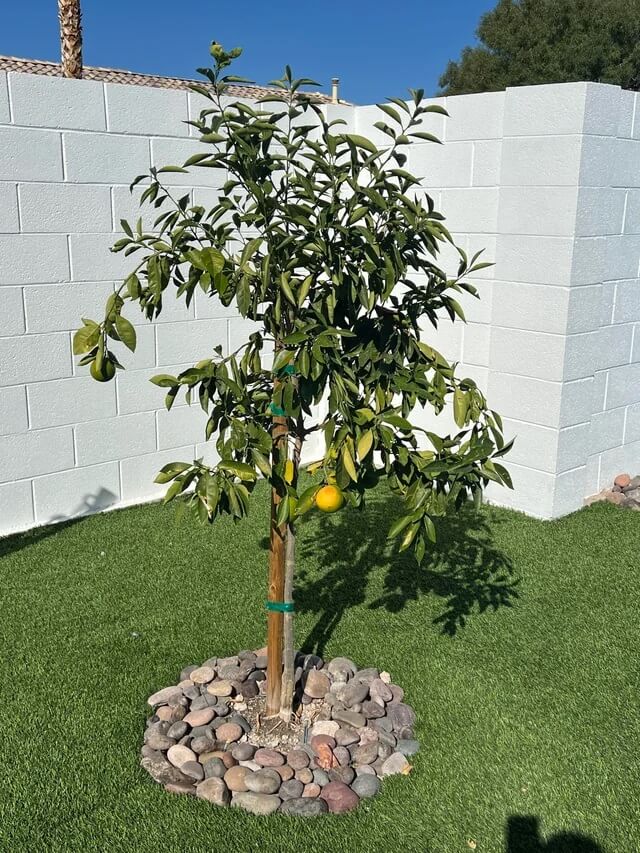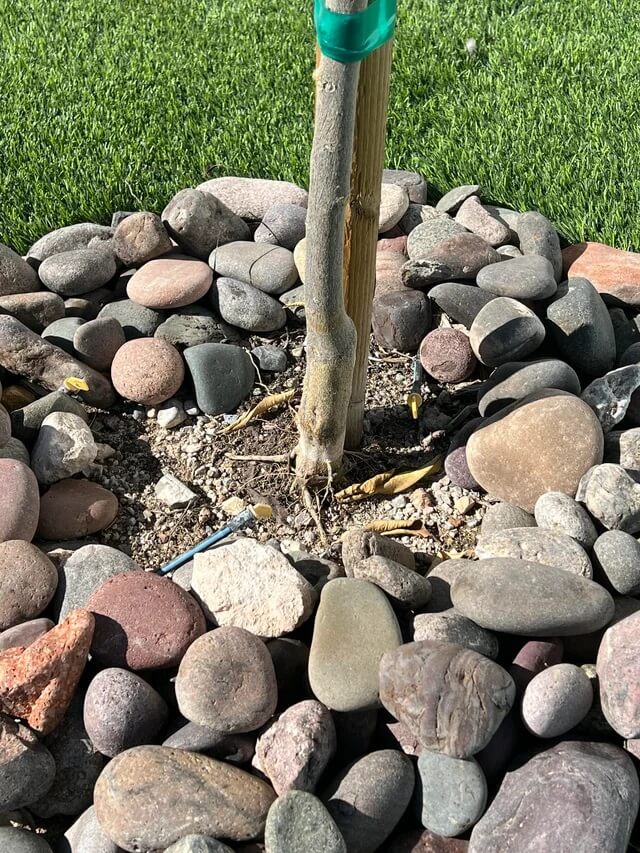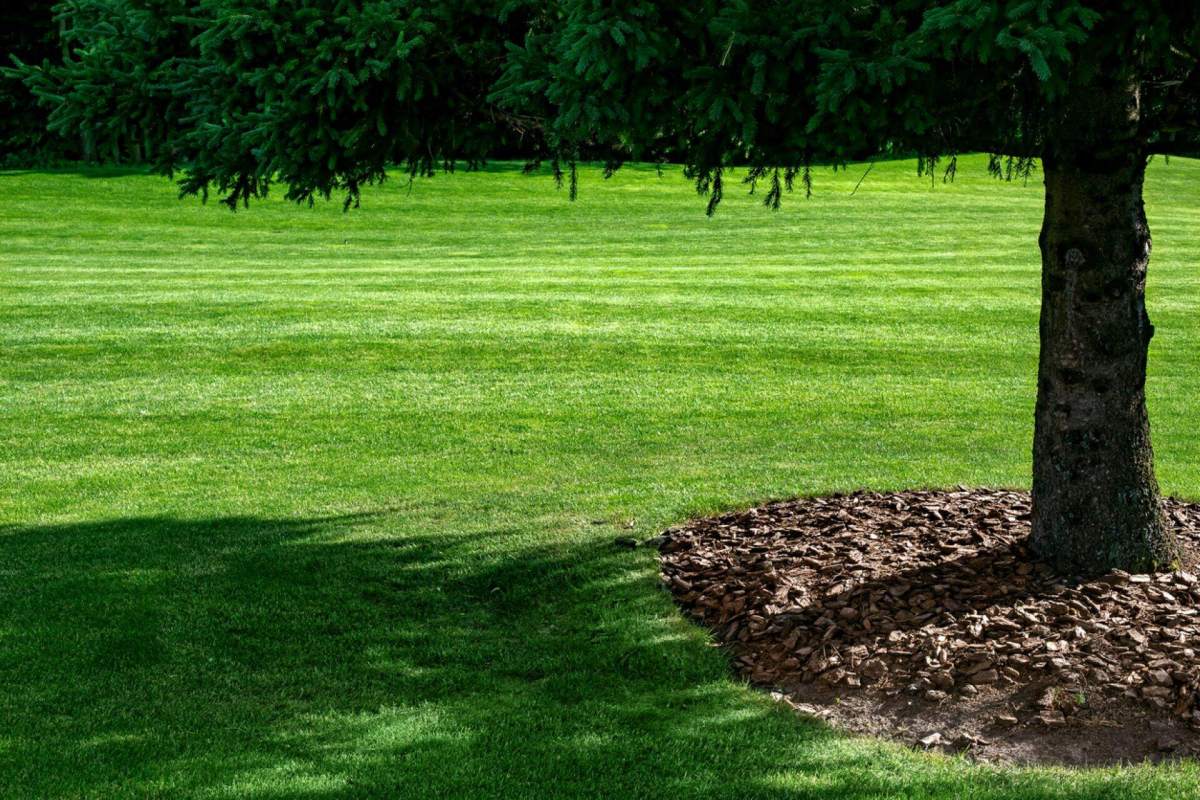When a homeowner took to Reddit to ask if their cara cara tree was dying, users were alarmed by the situation.
The poster's three photos showed the tree in a grim spot: surrounded by artificial turf with rocks around the trunk and a cinderblock wall just feet away.


"That feels like a pretty harsh environment for a tree especially if that's a fairly sunny, warm, and/or dry environment," one commenter said.
Another wrote: "I would put some wood trellis material or other radiant heat reducer over the block walls nearby. And replace the rocks on the roots with an organic mulch like shredded hardwood or pine bark. Tree roots extend about as far laterally as the tree is tall, so really the bigger area around the tree you can dedicate to nutrient-providing mulch the better off the tree will be."
A third user noted the tree was staked incorrectly, though the worst landscaping decision may have been the turf yard.
In addition to the heat that the synthetic surface can generate, it also leaches microplastics into the environment and emits heat-trapping gases as it breaks down. The plastic material contains numerous chemicals that have been shown to harm humans as well, including carcinogens, reproductive toxicants, and respiratory irritants.
Instead of choosing turf as an alternative to traditional grasses — many of which are non-native — homeowners can go with buffalo grass, clover, or even just native plants.
These native yards can lower bills by reducing the need for irrigation and other maintenance. Buffalo grass and clover lawns may not need to be mowed or trimmed for months on end, and native plants evolve with local wildlife to create mutualistic relationships.
Native flowers, grasses, trees, and shrubs are particularly beneficial, as they support pollinators.
Pollinators keep food on our tables and make fruits and veggies larger, more abundant, and more flavorful. Almost all fruits and grains in the United States depend on these animals, which support $10 billion worth of food annually.
To rewild your yard, you can start small or go big. Even baby steps can help homeowners reap the benefits of native plants, and every bit helps the environment.
You can reclaim 175,000 gallons of water per year, the money you save can be invested elsewhere, and your new pollinator friends will thank you for the absence of fertilizers, pesticides, and gas-powered lawn equipment.
Join our free newsletter for easy tips to save more, waste less, and help yourself while helping the planet.









